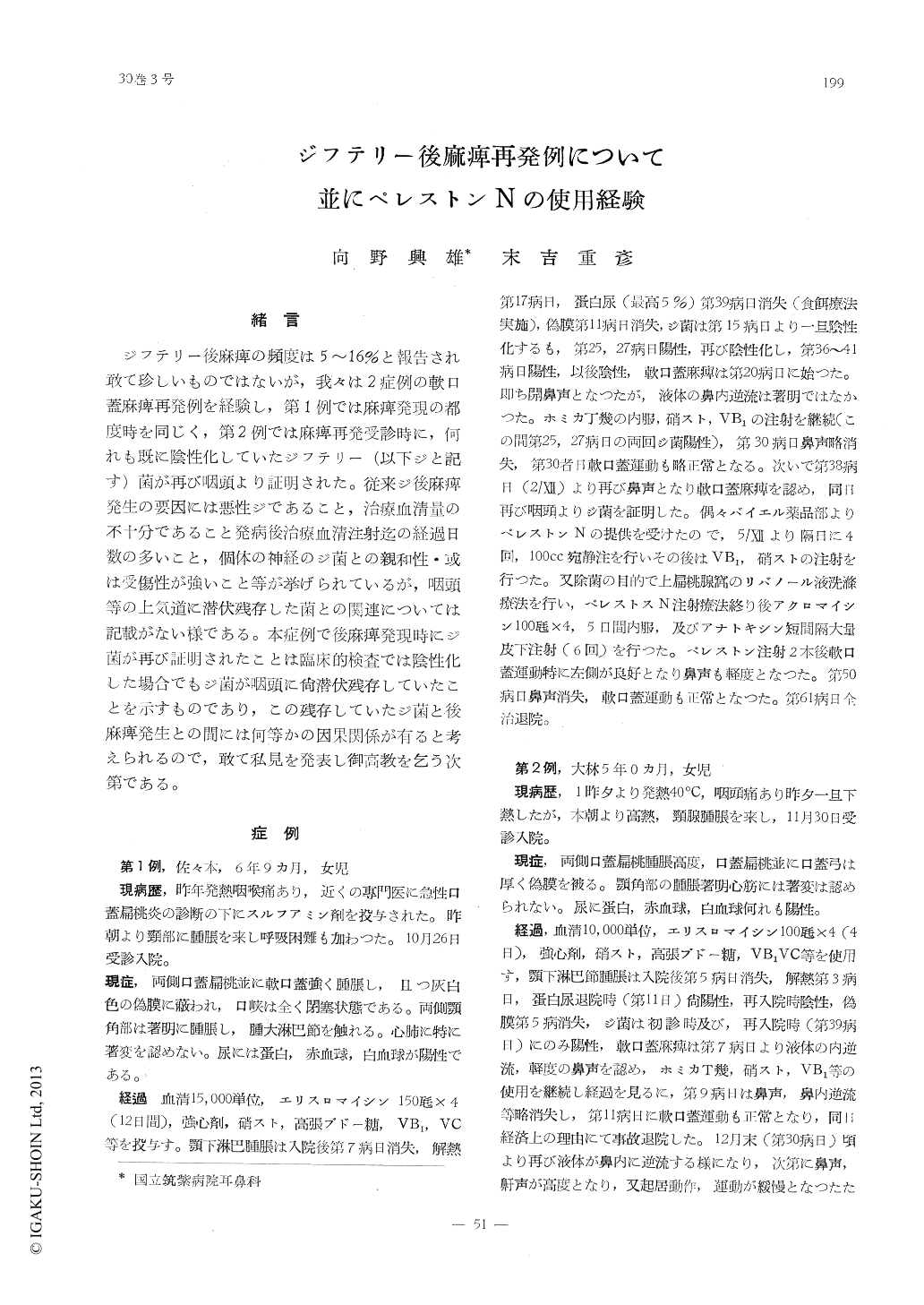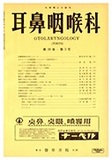- 有料閲覧
- 文献概要
- 1ページ目
緒言
ジフテリー後麻痺の頻度は5〜16%と報告され敢て珍しいものではないが,我々は2症例の軟口蓋麻痺再発例を経験し,第1例では麻痺発現の都度時を同じく,第2例では麻痺再発受診時に,何れも既に陰性化していたジフテリー(以下ジと記す)菌が再び咽頭より証明された。従来ジ後麻痺発生の要因には悪性ジであること,治療血清量の不十分であること発病後治療血清注射迄の経過日数の多いこと,個体の神経のジ菌との親和性・或は受傷性が強いこと等が挙げられているが,咽頭等の上気道に潜伏残存した菌との関連については記載がない様である。本症例で後麻痺発現時にジ菌が再び証明されたことは臨床的検査では陰性化した場合でもジ菌が咽頭に尚潜伏残存していたことを示すものであり,この残存していたジ菌と後麻痺発生との間には何等かの因果関係が有ると考えられるので,敢て私見を発表し御高教を乞う次第である。
Mukuno and Sueyoshi repopt 2 cases of post-diphtheritic paralysis that involved the nerve supplying the soft palate. In these cases it was found that, concurrently with the onset of paralysis, the bacterial culture that was rendered negative after the initial infection again became positive. From this fact the authors assumed that, in cases where recurrence of infection or paralysis after aninterval of apparent cure occu, irnfectious focus to be lying in the tonsillar crypts from whence the bacteria may again flourish or the accumulated toxin may cause involvement of a nerve or nerves; there appear to be atspecial affinity between nerve fibers and diphtheria toxin. Conseauently, for treatment of post-diphtheritic paralysis a measure should be taken that would be directed towards elimination of foci harboring the bacteria which would, at thr same time, purport to be an important step towards prevention of such involvements.

Copyright © 1958, Igaku-Shoin Ltd. All rights reserved.


